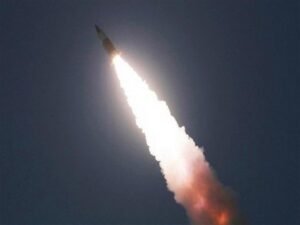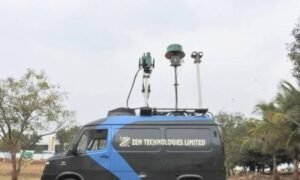With India set to host the upcoming G-20 Summit, the Indian Air Force (IAF) will be deploying the indigenously developed ‘Netra’ surveillance and monitoring aircraft as part of its responsibility to keep constant vigil over New Delhi and making the airspace impenetrable.
The IAF is taking extensive precautions to secure the skies over the city as the nation’s capital prepares to host the G20 Summit on September 9 and 10, as per reports in the Indian media. This would include the use of combat jets and sophisticated observation aircraft.
One of the most significant measures required to protect the airspace from any hostile intrusion is constant monitoring, for which the IAF will deploy Airborne Early Warning and Control System (AEW&CS) surveillance aircraft. However, a major attraction would be deploying indigenous NETRA surveillance aircraft for improved oversight.
The AEW&CS is a crucial component of contemporary warfare. It can control friendly fighters during air combat with hostile aircraft and identify and track approaching fighters, cruise missiles, and drones considerably earlier than ground-based radars.
The Indian Air Force has five airborne surveillance platforms, including two DRDO-developed Netra Mk-1 AEW&CS mounted on a Brazilian Embraer ERJ-145 platform and three Airborne Warning and Control System (AWACS) with Israeli-Phalcon systems mounted on Russian IL-76 cargo aircraft.
India’s Defense Research and Development Organization (DRDO) developed a multi-sensor AEW&C system on a carrier jet under the Center for Airborne Systems (CABS), and the project became known as Netra. It was the first indigenous airborne surveillance system developed by DRDO, mounted on a Brazilian Embraer ERJ-145 carrier.
What Do We Know About India’s Eyes In The Sky?
The indigenously developed AEW&CS was inducted into the IAF on February 14, 2017, making it only the fourth country in the world to have developed this advanced system, popularly known as the ‘eye-in-the-sky.’ It offers a range of 250 kilometers.
The Embraer 145, a medium-sized aircraft, was selected because of its 15% more powerful Rolls-Royce engines, which enable higher top speeds and more incredible cruise speeds. Embraer’s regional Jet EMB-145, capable of carrying a 3,000-kilogram payload, was chosen for the AEW&CS.
The aircraft had to be altered to include a second Auxiliary Power Unit to accommodate the increased power needs of its radar equipment. Five Operator Workstations (OWS), new Fuselage Fuel Tanks, and five rest crew chairs required the cabin to be redesigned. An in-flight refueling mechanism was also fitted on the platform aircraft to enable prolonged observation missions.
Additionally, it can support the in-flight refueling system, extending the duration of the operation. According to publicly available information, two radiating planar arrays positioned above the fuselage of the EMB-145 provide a coverage of 240 degrees. In addition to this, the arrays in an active antenna array unit (AU) are fixed back-to-back.

The aircraft already had SATCOM capabilities, but a significant increase in electrical and cooling capacities had to be added to accommodate the additional systems housed.
Additionally, the aircraft manufacturer had to make many aerodynamic and structural changes at its facility. These upgrades enabled the installation of the sophisticated electronic systems that CABS had created.
This kind of aircraft makes it possible to monitor enemy aircraft flying even very slowly deep within hostile territory. They ensure that AD fighter aircraft are used as effectively as possible to attack intruding enemy fighters, freeing up numerous aircraft for additional missions. These ‘force multipliers’ are, therefore, efficient and improve the capability of aerial combat.
Additionally, the system can locate enemy communications and radar signals from the air or the ground. The indigenously developed ‘Netra,’ for one, was used efficiently during the Balakot strike in 2019.
When Pakistan Air Force (PAF) F-16 combat jets attempted to violate Indian airspace the day after the Balakot strikes in February 2019, it played a crucial “behind the scenes” role by providing the necessary surveillance cover during the pre-dawn aerial attack.
It also played a significant part by alerting and directing its air assets. The AEW&CS Netra has become the backbone of the IAF’s airborne surveillance systems.
The #IAF NETRA Airborne Electronic Warfare & Control (AEW&C) is a specially modified ERJ-145 aircraft fitted with #indigenous sensors.
An airborne surveillance platform, it has the ability to maintain constant, all-pervasive vigil over the entire battlefield.#IAFCapabilities pic.twitter.com/1la7PjPbAh
— Indian Air Force (@IAF_MCC) July 23, 2022
In the words of the IAF, “The IAF NETRA Airborne Electronic Warfare & Control (AEW&C) is a specially modified ERJ-145 aircraft fitted with #indigenous sensors. An airborne surveillance platform, it can maintain constant, all-pervasive vigil over the entire battlefield.”
Unsurprisingly, the aircraft has been chosen to monitor the airspace over New Delhi, besides the other imported AWACS systems.
The IAF is also deploying an array of advanced equipment and weapons to prepare for any possible threat that India’s surveillance aircraft detects during the time.
IAF On Mission G-20!
The Air Force also intends to deploy cutting-edge air defense missile systems, including the Medium Range Surface to Air Missile system (MRSAM) and the Akash air defense missile system, according to a senior defense official who spoke to India Today.
Fighter jets, notably Rafales, have been on high alert at the operational readiness platform level to ensure quick response capabilities. Along with bases in Ambala, Bhatinda, Adampur, and Sirsa, the Indian Air Force has also activated air bases in and around the capital, notably Hindan Air Base.
In addition, the national capital has been equipped with counter-drone technologies to thwart any unauthorized drone operations. Civil agencies are working together to ensure tight implementation of airspace security measures to minimize the danger of infractions.

“In the meeting, we have decided that the safety and security of Indian air space over Delhi will be taken care of by the India Air Force during the G20 summit in Delhi on September 9 and 10. Fighter planes will be on standby mode to respond to any situation and closely watch any UAV or drone activity. All agencies concerned with air space safety and Delhi airport will work in close coordination,” a senior official told the media after a high-level meeting between all the stakeholders.
During the G20, Air Traffic Control has been instructed to be on high alert and closely monitor all flight routes into Delhi, the official continued. The flight will be rerouted to four airports as part of the backup plan in the event of an emergency.
Source link
#India #Employs #Indigenous #NETRA #Aircraft #Guard #G20 #Summit #Track #Pakistans #F16s







